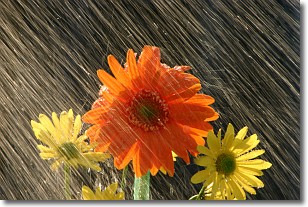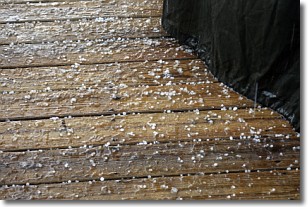Weather Alert in New Mexico
Fire Weather Watch issued June 16 at 1:50AM MDT until June 17 at 9:00PM MDT by NWS Albuquerque NM
AREAS AFFECTED: West Central Mountains; West Central Basin and Range
DESCRIPTION: ...FIRE WEATHER WATCH FOR WEST CENTRAL NEW MEXICO TUESDAY AFTERNOON AND EVENING DUE TO STRONG WINDS, LOW HUMIDITY, AND VERY HIGH FIRE DANGER... .An upper level disturbance will cross north of New Mexico Tuesday, bringing breezy to windy conditions to the state alongside hot temperatures and very low humidity resulting in very high fire danger. In addition, numerous lightning strikes occurred over the southwestern mountains last Friday. This along with ongoing wildfires is posing higher risk for rapid fire growth Tuesday. * AREA AND TIMING...West Central Mountains (Zone 105) and West Central Basin and Range (Zone 109) Tuesday afternoon through Tuesday evening. * 20 FOOT WINDS...Sustained at 15 to 25 mph with occasional gusts to 35 mph. * RELATIVE HUMIDITY...Dropping to 5 to 10 percent in the late afternoon. * IMPACTS...Any ongoing or new fires that develop will likely spread rapidly. Outdoor burning is not recommended.
INSTRUCTION: Please advise the appropriate officials or fire crews in the field of this Fire Weather Watch.
Want more detail? Get the Complete 7 Day and Night Detailed Forecast!
Current U.S. National Radar--Current
The Current National Weather Radar is shown below with a UTC Time (subtract 5 hours from UTC to get Eastern Time).

National Weather Forecast--Current
The Current National Weather Forecast and National Weather Map are shown below.

National Weather Forecast for Tomorrow
Tomorrow National Weather Forecast and Tomorrow National Weather Map are show below.

North America Water Vapor (Moisture)
This map shows recent moisture content over North America. Bright and colored areas show high moisture (ie, clouds); brown indicates very little moisture present; black indicates no moisture.

Weather Topic: What is Rain?
Home - Education - Precipitation - Rain
 Next Topic: Shelf Clouds
Next Topic: Shelf Clouds
Precipitation in the form of water droplets is called rain.
Rain generally has a tendency to fall with less intensity over a greater period
of time, and when rainfall is more severe it is usually less sustained.
Rain is the most common form of precipitation and happens with greater frequency
depending on the season and regional influences. Cities have been shown to have
an observable effect on rainfall, due to an effect called the urban heat island.
Compared to upwind, monthly rainfall between twenty and forty miles downwind of
cities is 30% greater.
Next Topic: Shelf Clouds
Weather Topic: What is Sleet?
Home - Education - Precipitation - Sleet
 Next Topic: Snow
Next Topic: Snow
Sleet is a form of precipitation in which small ice pellets are the primary
components. These ice pellets are smaller and more translucent than hailstones,
and harder than graupel. Sleet is caused by specific atmospheric conditions and
therefore typically doesn't last for extended periods of time.
The condition which leads to sleet formation requires a warmer body of air to be
wedged in between two sub-freezing bodies of air. When snow falls through a warmer
layer of air it melts, and as it falls through the next sub-freezing body of air
it freezes again, forming ice pellets known as sleet. In some cases, water
droplets don't have time to freeze before reaching the surface and the result is
freezing rain.
Next Topic: Snow
Current conditions powered by WeatherAPI.com




